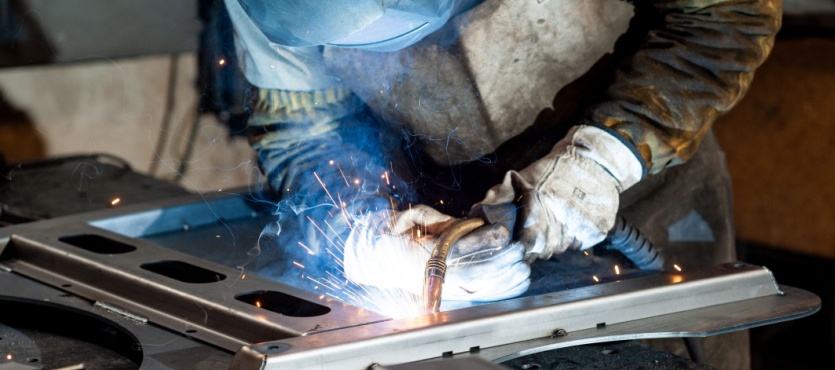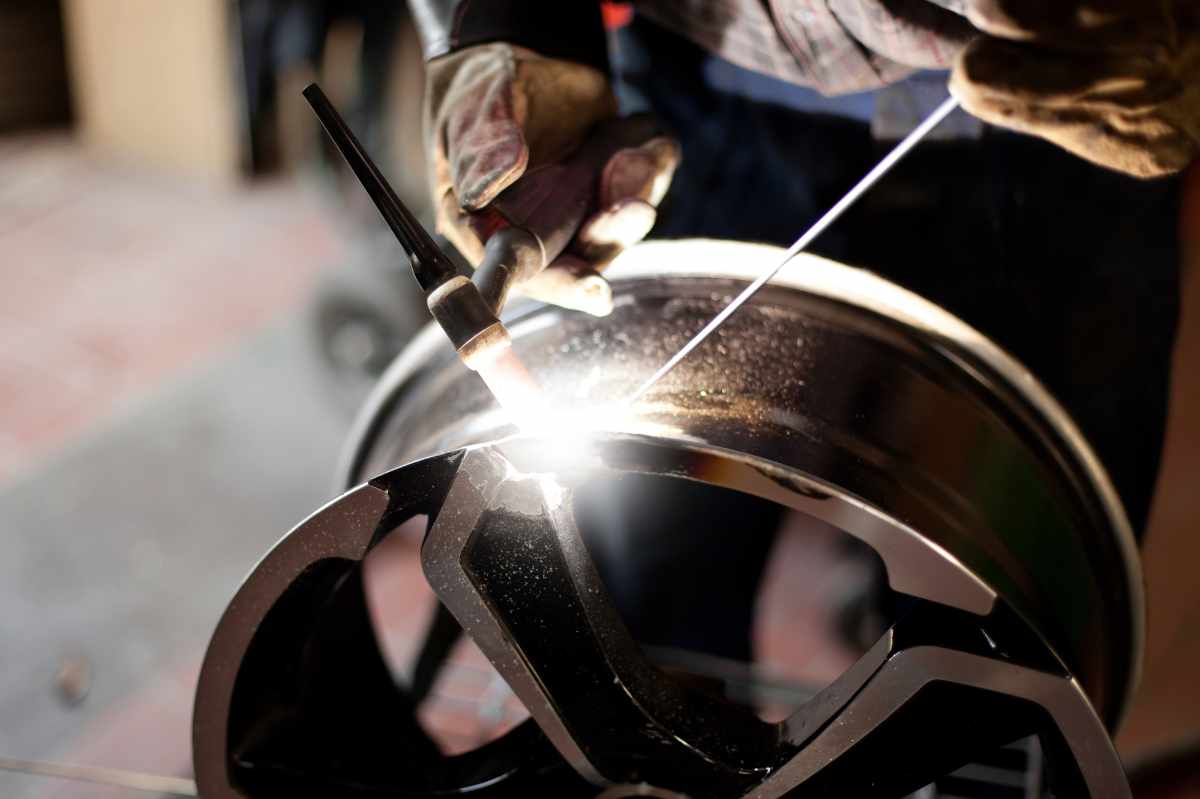A detailed look at welding penetration issues and Montana Mobile Welding and Repair Belgrade’s fixes
Usual Welding Repair Issues and How to Address Them Effectively
Welding repairs usually come across a variety of concerns that can jeopardize the stability of the last product. Usual troubles consist of poor infiltration, porosity, and imbalance, among others. Each problem offers special challenges that need certain strategies for resolution. Recognizing these concerns is vital for welders intending to boost their results and abilities. This discussion will certainly discover these typical welding repair service issues and reliable methods to address them.
Inadequate Infiltration
Insufficient penetration happens when the weld metal stops working to totally fuse with the base product, leading to weak joints and prospective structural failures. This issue typically originates from inadequate warm input, wrong electrode angle, or inappropriate welding speed. Welders may come across poor infiltration due to a miscalculation of the needed specifications for a particular material density or kind. Additionally, contamination on the base material's surface can hinder reliable bonding, exacerbating the issue. To deal with poor infiltration, welders must ensure ideal settings on their devices and maintain a tidy work surface. Routine assessment of welds is advised to recognize any type of deficiencies early, permitting prompt improvements and the avoidance of compromised architectural stability in welded settings up.
Porosity
Porosity is a typical problem in bonded joints that manifests as small gas bubbles trapped within the weld steel. This issue can jeopardize the honesty of the weld, bring about minimized toughness and prospective failing under anxiety. Montana Mobile Welding and Repair Belgrade Welding. Porosity normally develops from contamination, wetness, or improper welding methods, which allow gases to escape right into the molten weld swimming pool. To deal with porosity, welders need to assure correct surface prep work, maintain a tidy workplace, and make use of appropriate welding specifications. Furthermore, selecting the ideal filler product and shielding gas can minimize gas entrapment. Normal assessment and testing of welds can assist recognize porosity early, assuring timely restorative actions are taken, thus preserving the quality and integrity of the welded structure
Imbalance
Imbalance in welding can develop from numerous elements, consisting of incorrect setup and thermal expansion. Comprehending the root triggers is crucial for reliable resolution. Numerous modification strategies are offered to realign parts and ensure structural integrity.
Root causes of Misalignment
Welding imbalance typically comes from a variety of underlying concerns that can jeopardize architectural integrity. One key cause is incorrect fit-up of parts before welding, which can cause gaps and unequal surface areas. Variations in thermal development throughout the welding process can additionally cause distortion, especially if the materials being signed up with have different coefficients of development. Additionally, inadequate fixturing and clamping may fall short to hold elements firmly in position, bring about motion during welding. Poorly kept equipment, including welding equipments and devices, may present incongruities in the weld bead, further contributing to misalignment. Finally, driver error, originating from inadequate training or experience, can additionally play a considerable role in developing misaligned welds.
Adjustment Methods Offered
Resolving imbalance properly requires a mix of restorative methods tailored to the particular issues handy. One typical technique is the use of jigs or components to hold parts in the appropriate setting throughout welding, making sure constant placement. Furthermore, preheating the products can help in reducing distortion and boost fit-up. For considerable misalignment, mechanical realignment strategies, such as making use of hydraulic jacks or clamps, can be utilized to remedy the setting before welding. Post-weld warmth treatment might also be needed to relieve stresses brought on by imbalance. Mindful inspection and adjustment during the configuration phase can prevent imbalance issues from ending up being considerable troubles, advertising a smoother welding process and improving overall architectural stability.
Distortion
Distortion is an usual challenge in welding that can develop from numerous aspects, including irregular heating & cooling. Understanding the root causes of distortion is vital for implementing reliable prevention methods. Resolving this issue not only improves architectural integrity however additionally improves the overall top quality of the weld.
Root causes of Distortion
When subjected to the extreme warm of welding, materials typically go through changes that can lead to distortion. This phenomenon primarily emerges from thermal growth and tightening during the welding process. As the weld area heats up, the material expands; upon air conditioning, it contracts, which can produce internal anxieties. Additionally, uneven heating across a work surface can intensify these stress and anxieties, causing bending or flexing. The sort of product also plays a significant duty; steels with varying thermal conductivity and coefficients of expansion may respond in different ways, resulting in unforeseeable distortions. Moreover, bad joint layout and insufficient fixturing can add to imbalance during welding, enhancing the possibility of distortion. Comprehending these causes is crucial for reliable welding fixing and avoidance strategies.
Avoidance Techniques
Efficient prevention strategies for distortion during welding concentrate on managing warmth input and making certain appropriate joint style. Preserving a regular warmth input helps to lessen thermal development and tightening, which can lead to distortion. Using strategies such as pre-heating the workpiece can also reduce the temperature slope, promoting consistent home heating. In addition, selecting suitable joint layouts, such as T-joints or lap joints, can boost security and decrease stress focus. Executing correct fixturing to protect the workpieces in location further help in keeping positioning during the welding process. Ultimately, staggered welding sequences can distribute heat extra uniformly, protecting against local distortion. By applying these techniques, welders can substantially decrease the likelihood of distortion and improve the general top quality of their welds.
Breaking
Breaking is an usual concern come across in welding repairs, typically resulting from different elements such as improper air conditioning prices, product option, or inadequate joint preparation. The occurrence of cracks can greatly compromise the integrity of the weld, causing possible failures throughout procedure. To resolve this problem, welders need to initially analyze the source, ensuring that materials are compatible and properly picked for the certain application. In addition, regulating the air conditioning price during the welding process is vital; rapid air conditioning can induce tension and bring about breaking. Appropriate joint style and preparation also contribute to minimizing Full Report the threat. Carrying out these methods can enhance weld quality and toughness, ultimately decreasing the possibility of breaking in completed weldments.

Incomplete Fusion
A considerable concern in welding fixings is insufficient combination, which occurs when the weld metal does not adequately bond with the base product or previous weld passes - Belgrade. This problem can bring about weak points in the joint, possibly compromising the integrity of the welded structure. Factors adding to insufficient combination consist of insufficient warm input, incorrect welding strategy, and contamination of the surface areas being signed up with. To address this issue effectively, welders need to ensure proper pre-weld cleaning and surface preparation, along with readjust their welding specifications to accomplish sufficient penetration and blend. Regular examination during the welding procedure can likewise aid recognize insufficient blend early, permitting timely corrective actions to improve the overall high quality of the weld
Overheating
While welding repair services can boost structural integrity, overheating offers a considerable challenge that can cause material destruction. Too much heat during welding can change the mechanical homes of metals, resulting in minimized toughness, increased brittleness, and bending. This sensation is specifically critical in high-stress applications where architectural dependability is vital. Recognizing getting too hot can involve aesthetic inspections for discoloration or distortion, as well as keeping an eye on temperature level throughout the welding process. To alleviate the threats connected with getting too hot, welders should employ proper methods, such as regulating warmth input, changing traveling speed, and making use of ideal filler products. In addition, carrying out pre- and post-weld heat treatments can help recover product homes navigate here and boost the overall quality of the repair service, guaranteeing long-term performance and safety and security.
Regularly Asked Concerns
What Are the Typical Indications of a Welding Flaw?

How Can I Test My Welds for High quality?
To examine welds for quality, one can utilize aesthetic examinations, ultrasonic testing, and radiographic techniques. Each strategy ensures structural integrity, determines defects, and validates adherence to defined requirements, eventually enhancing the dependability of the bonded joints.
What Safety and security Safety Measures Should I Take While Welding?
When welding, one should prioritize security by putting on proper personal safety devices, making sure proper ventilation, safeguarding flammable products away, keeping a clean work area, and being conscious of environments to avoid injuries and accidents.
Can I Fix a Weld Without Redesigning the Entire Joint?
Fixing a weld without remodeling the entire joint is possible, depending upon the damage (Fabrication). Methods such as grinding, adding filler product, or using a welding procedure can properly resolve certain defects while protecting the surrounding framework
What Devices Are Crucial for Efficient Welding Services?
Vital devices for efficient welding repair work consist of a welding maker, wire brush, mill, safety equipment, clamps, and filler products. Each device plays an important duty in making certain high quality and security throughout try these out the repair process. Porosity usually emerges from contamination, wetness, or improper welding methods, which enable gases to get away into the molten weld pool. Inadequately conserved tools, including welding machines and devices, may introduce disparities in the weld grain, additional contributing to misalignment. When subjected to the intense heat of welding, products frequently undergo adjustments that can lead to distortion. Fracturing is a common concern experienced in welding repair work, commonly resulting from different elements such as inappropriate air conditioning prices, material selection, or poor joint preparation. A significant issue in welding repair services is insufficient blend, which happens when the weld steel does not sufficiently bond with the base product or previous weld passes.